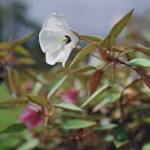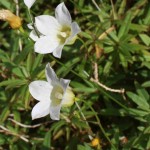6 June 2014 | Comments
BUT MUST PROTECT PRECIOUS LEGACY

The recent RSPB wildlife stocktake of the Overseas Territories – the first ever undertaken – has placed the spotlight on St Helena as the jewel in the crown, holding an astonishing 30% of all endemic species on British territory (species found nowhere else on earth). In fact, of all the OTs, this tiny 47 square miles far and away tops the league, with Bermuda coming a distant second.
In January 2014, the UK Environmental Audit Committee urged ‘enhanced monitoring’ and called on the UK Government to co-ordinate a comprehensive research programme with all stakeholders. With funding from the Foreign and Commonwealth Office, the RSPB has now started this work by completing the first ever stocktake of species across the UK’s island OTs. This brought together all known records from the last 300 years to finally reveal what species are known to be present. Given limited resources, it is crucial that OT biodiversity knowledge is strengthened so that financial and policy support can be targeted to where it is most urgently needed. The report (RSPB OTs Wildlife Stocktake Report, May 2014) can be seen on the RSPB website at: www.rspb.org.uk
The protection of St Helena’s environment, a mid Atlantic life-raft of rare and irreplaceable species, plus concerns regarding public health and agriculture, underpin the need for the development of St Helena’s border protection policy – what we call Biosecurity. Increased travel into St Helena will present fresh challenges that we must be prepared to meet, in order to secure one of the Island’s greatest assets for future generations.
Prime Minister David Cameron has said of the OTs: ‘We see an important opportunity to set world standards in our stewardship of the extraordinary natural environments we have inherited’.
Jeremy Harris, Director of the Saint Helena National Trust, commented:
“Over as much as 14 million years, St Helena has developed a totally unique biosphere of incredible diversity protected by thousands of miles of ocean. Five hundred years ago, it was discovered by people who brought goats and rats and other species that had a huge impact on its fragile environment.

“What remains today is still clearly remarkable and unique and of international significance. St Helena, now more than ever, needs our protection and care as the Airport approaches, bringing with it new risks and challenges.”
Why is St Helena Special?
The RSPB’s report reveals St Helena’s special importance, and supports the UK Government’s stance of protecting unique biospheres in the OTs. It finds that:
- 94% of British endemic species lie within its OTs
- Of the 1,547 species, St Helena holds the most at over 500, and rising
- This is 180 more than the next highest, Bermuda
- This means that the 47 sq miles of St Helena hold roughly 30% of all endemic species to be found on British territory

As an example of St Helena’s astonishing diversity, the Island has roughly 7 times more endemic terrestrial invertebrates than the Galapagos Islands if calculated by land area.
Ben Sansom, Head of the Environmental Management Directorate, added:
“This is a landmark report for the Overseas Territories and highlights how important it is for all of us on St Helena to protect, restore and maintain the Island’s very special ecosystem. The report was a collaborative effort between the RSPB and the Overseas Territories and I’d like to thank everyone on St Helena who contributed to it.”
Senior Veterinary Officer, Joe Hollins, concluded:
“As we move towards the opening of the Airport, the eventual aspiration of up to 600 visiting tourists a week and the loss of the ‘quarantine effect’ of a five-day passage by ship, biosecurity on St Helena is necessarily being tightened. Our biosecurity framework has already gone out to public consultation and been passed for progression, and we will now move ahead to close any loopholes and establish any necessary legislation.
“We already have laws in place for live animals and related genetic materials, and for fruit, vegetables, plants and related products. And the Bees Ordinance protects our disease-free bees and honey. But remaining loopholes to be closed include certain meat, dairy and fish imports.”
Notes for Editors
The Importance of Biosecurity on St Helena
Biosecurity is a system of preborder, border and post border controls set up to protect sensitive ecosystems from pests and diseases that pose a threat to the environment, agriculture and public health.
Countries that are in close proximity to, or are part of, the world’s continental masses have been exposed to such threats for centuries, added to which they generally have long, leaky land and coastal borders which are difficult to defend. It is also true that in recent times the spread of pests and diseases has risen alarmingly, with the increased movement of people, cargo, animals and animal products – both legal and illegal.
St Helena, as a small and isolated island, has yet to be so exposed. And it also boasts one of the best possible natural and defendable borders – over a thousand miles of sea with bottleneck points of entry. But this border is only as good as the nation’s biosecurity controls. The coming of the Airport, and eventual projected tourist numbers, represent a major biosecurity challenge.
The current policy on St Helena is (and has been for some time) for Customs staff at the Wharf to scan all incoming baggage and check all imported cargo.
Nearly all island nations carry out some degree of inbound scanning including, for example, New Zealand, Pacific Islands such as Samoa and Fiji, and the Galapagos – all of which operate complete inbound scanning.
A variety of pictures of St Helena endemic species are attached to this release.
SHG
3 June 2014
Comments